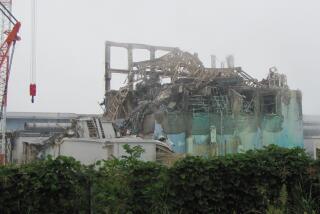Navy Finishing Plan to Recover Trawler Dead
- Share via
HONOLULU — The U.S. Navy’s plans for retrieving a Japanese fishing boat that sank, killing nine people, after it was rammed by a U.S. nuclear submarine, are expected to clear a final hurdle as early as today, Navy sources said.
The trawler Ehime Maru sank in 2,000 feet of water on Feb. 9 after it was struck by the Greeneville, which was conducting an emergency surfacing maneuver for the benefit of visiting civilian VIPs.
The collision between the submarine and the Ehime Maru, which left four high school students among the dead, strained relations between Japan and the United States and ended the Navy career of the Greeneville’s captain, Cmdr. Scott D. Waddle.
Navy officials vowed at the time to retrieve the bodies of the dead, and have come up with an ambitious plan that would involve moving the 750-ton Ehime Maru to more shallow waters, where the bodies could be reached.
But Adm. Thomas Fargo, commander of the Pacific Fleet, must first approve an environmental assessment. Sources told Reuters that Fargo is expected to give it as early as today.
Federal marine wildlife officials in Honolulu said Fargo will probably not reject the move on environmental grounds because it presents few risks to the ocean, even though the hull contains an estimated 45,000 gallons of diesel fuel.
“I don’t think other than a possible small spill that there are any risks,” said Michael Molina, a spokesman for the Honolulu office of the U.S. Fish & Wildlife Service. “Even if there is a release of diesel fuel it is in open waters where there is a significant amount of mixing.”
The fuel, which is lighter than crude oil, would dissolve quickly and probably not reach Oahu shorelines under typical weather conditions.
Molina, who has helped the Navy with the environmental assessment, said the plan calls for ships with skimming equipment to follow the move and suck the fuel off the ocean surface if there is a spill.
The Navy wants to move the Ehime Maru to a site about one mile southwest of the Honolulu Airport’s reef runway and set the vessel on a flat, sandy bottom in 115 feet of water, fleet spokesman Jon Yoshishige said.
More to Read
Sign up for Essential California
The most important California stories and recommendations in your inbox every morning.
You may occasionally receive promotional content from the Los Angeles Times.










